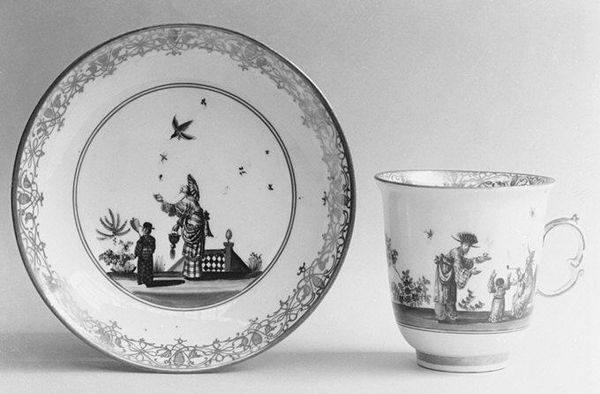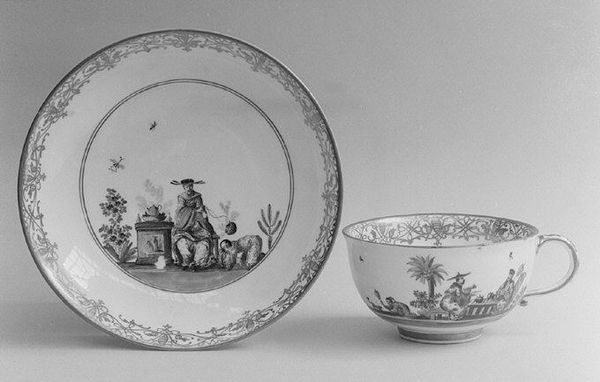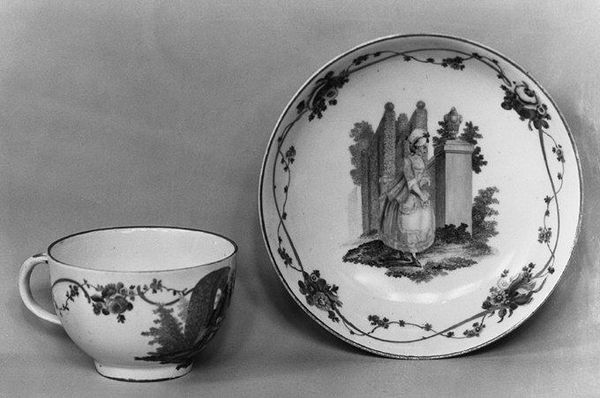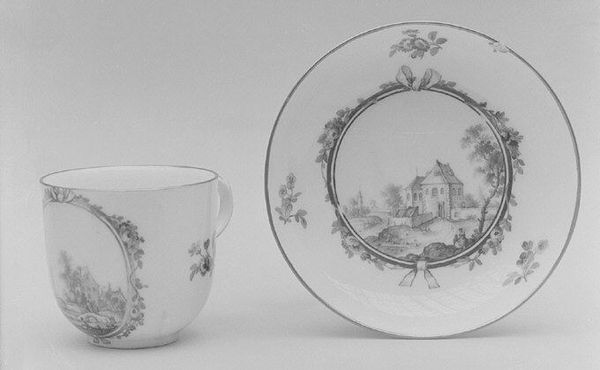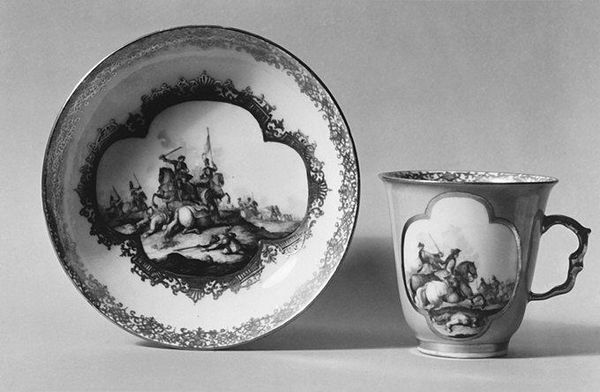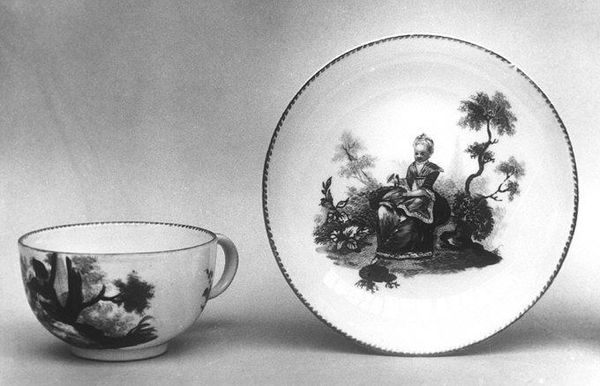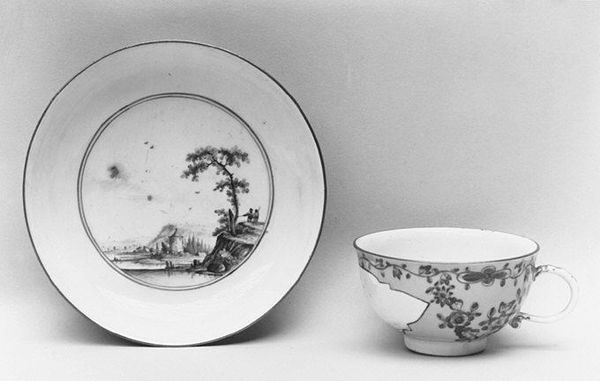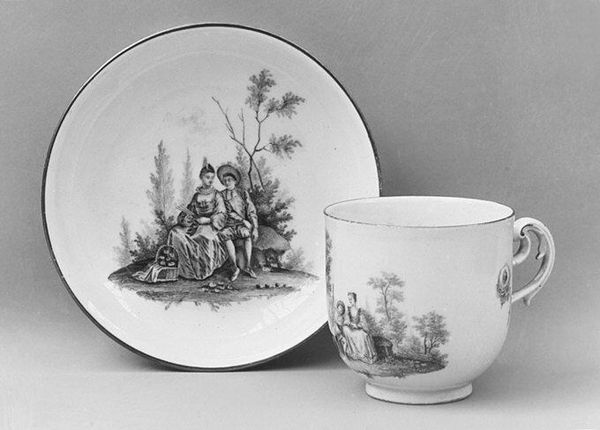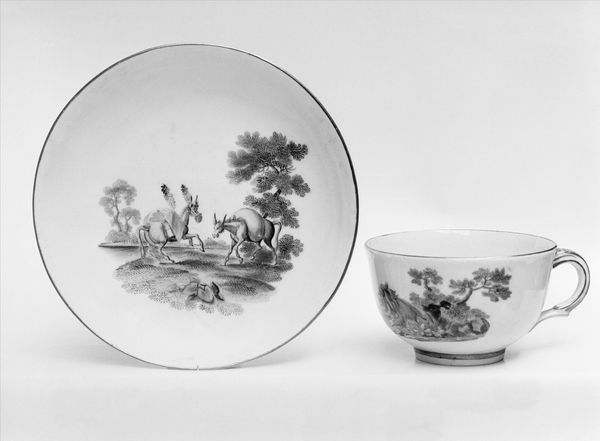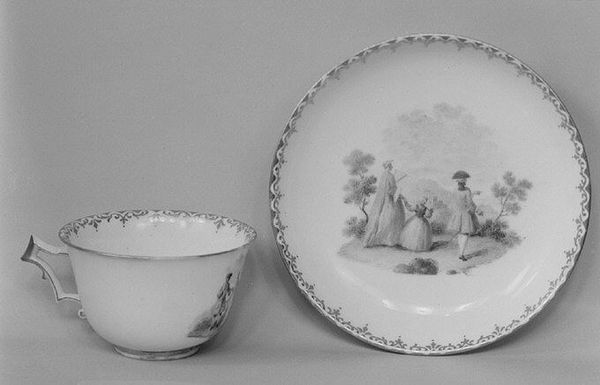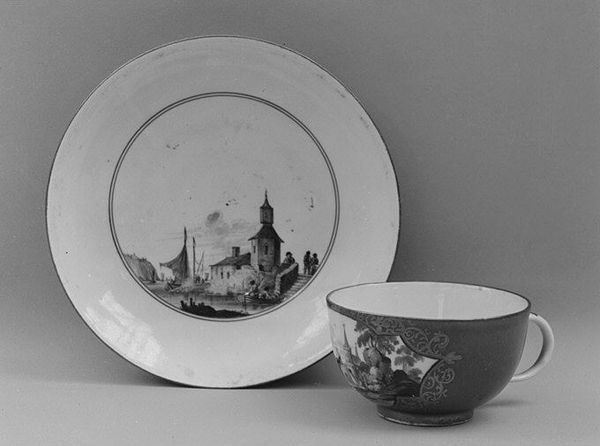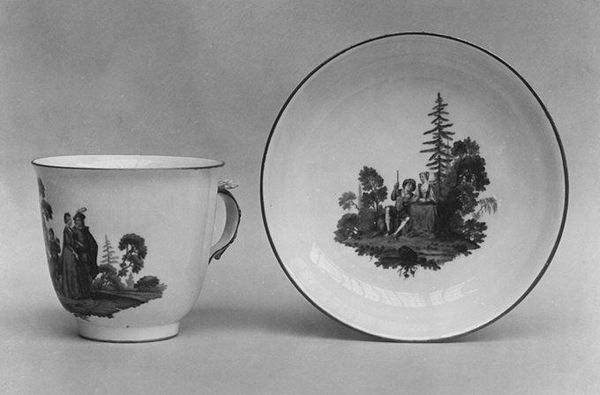
drawing, ceramic, porcelain, sculpture, pendant
#
drawing
#
ceramic
#
porcelain
#
figuration
#
sculpture
#
ceramic
#
genre-painting
#
decorative-art
#
rococo
#
pendant
Dimensions: Overall (Teabowl): 1 7/8 × 2 1/2 in. (4.8 × 6.4 cm); Diameter (Saucer): 4 3/4 in. (12.1 cm)
Copyright: Public Domain
This teabowl and saucer were produced in Weesp, near Amsterdam, at a porcelain factory that operated for a brief time in the late 18th century. The decoration of these pieces speaks to the complex cultural history of the Netherlands at this time. On both, we see simple pastoral scenes of working women, rendered in delicate monochrome. The very existence of such a factory speaks to the rise of Dutch mercantile power and its global trade networks. Dutch merchants were, after all, the first Europeans to import large quantities of Chinese porcelain. The establishment of local porcelain factories was a means of both competing with that trade and catering to a growing middle class with money to spend. The social and economic history of the Netherlands, in short, is written into the material and decorative choices evident in this teabowl and saucer. To understand it better, we can look to archives of trade, company records, and pattern books. What we learn from those investigations inevitably changes how we see the object before us.
Comments
No comments
Be the first to comment and join the conversation on the ultimate creative platform.
